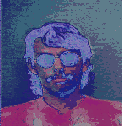To install all of the SCO Skunkware 96 custom installable packages
(with the sole exception of the GNU Dev Sys package
inst/gds, use
the media images in
You must be running SCO OpenServer 5 to take advantage of these custom
installable media images. SCO UnixWare users should look in the directory
If, as root, you are running the X.Desktop, then you can configure your
system to mount the SCO Skunkware 96 CD-ROM by double-clicking the System
Administration folder -> Filesystems -> Filesystem Manager. Alternatively,
at a root shell prompt, type "scoadmin f" to bring up the Filesystem Manager.
Next select Mount -> Add Mount Configuration -> Local and enter /dev/cd0 for
the device and a mount point. Change the "Can Users Mount"
to Yes and uncheck the "At System Startup" mount. After completing this
operation, you should be able to mount and unmount the SCO Skunkware 96 CD-ROM
by typing "mnt
NOTE TO SCO ODT 3.0 USERS :
The Rockridge extensions to the High-Sierra filesystem format are not
supported under SCO ODT 3.0. In order to mount the SCO Skunkware 96 CD-ROM
on an ODT 3.0 system, use the command :
On any other system, after mounting or otherwise making the High-Sierra
Rockridge CD-ROM filesystem accessible, point your WWW browser to
What is it ?
The software on this volume has been built primarily using the
SCO OpenServer Development System Release 5. In most cases, we
have built binaries intended for the SCO OpenServer Release 5
family of products, using ELF binaries and Dynamic Link
Libraries. Some of the programs will run on earlier versions,
but these have not been extensively tested. In almost all cases,
source code is also provided, so you can rebuild for earlier SCO
releases or other platforms.
This cdrom is built as a mountable filesystem, and may be mounted
to view, use, or install. To mount the cdrom, use the mount(ADM)
command with the mount point of your choice. For instance :
If you do not have gzcat installed (part of the gzip package), you can
install it off of the SCO Skunkware 96 CD via the command :
Files intended for use on SCO UnixWare systems are contained in the
/UnixWare directory. Here you'll find over 340 Megabytes of files
including a snapshot of the FreeBird archives, Xanim 2.70.6.2 and
a debug malloc.
Also contained in the cd-rom filesystem layout is the /TLS
directory. The /TLS directory contains SCO Technical
Library Supplements which you may find of interest. These are
drawn from the SCO Support Online System, and are also accessible
via anonymous ftp on the Internet from ftp.sco.com, or via
web facilities at http://www.sco.com
We are interested in your general comments about this distribution
and about development tools in general. Please direct to:
and
Main Skunkware 96 Page ||
Productivity Tools ||
Network/Security Tools ||
Tcl/Tk Packages ||
TLS ||
SCO UnixWare ||
X11 Clients
# mount -r -f HS,lower /dev/cd0 /mnt
All filenames will be mapped to lower case and truncated to a maximum of
8 characters with a 3 character suffix (i.e. 8.3 file naming as in MS-DOS).
Although the ELF binary format and use of DLLs prevents execution on ODT 3.0
systems, you will still be able to read and copy files to your system (e.g.
you may want to apply one or more of the Technical Level Supplements in the
# mount -r -f RCKRDG /dev/cd0 /mnt
Source code is provided in the /src directory. The packages
appear as subdirectories under /src/Tools, /src/X11 and
/src/Tcl. In some cases, source code is provided but no
compiled binaries. The source distributions are in gzip-compressed
tar format. In order to extract these, use the command :
$ gzcat /
Where
# custom -p SCO:Gzip -i -z /
In fact, SCO Skunkware 96 contains over 30 such custom installable packages.
These are distributed as "media images" and reside in subirectories in
the top-level directories Tools, Tcl and X11. For information on how to
install these, see the file INSTALL.
SCO Product Manager - Development Systems and Advanced Hardware Strategy
400 Encinal St. Santa Cruz, CA 95061 FAX: 408-427-5417 Voice: 408-427-7565

Ronald Joe Record
Affiliation: SCO /
VMI
Email: rr@ronrecord.com
WWW:
http://skunkware.dev/skunkware/95/rr.html
Voice: (408) 427-7604 FAX: (408) 427-5417
USPS: c/o The Santa Cruz Operation, 400 Encinal St, Santa Cruz, CA 95061